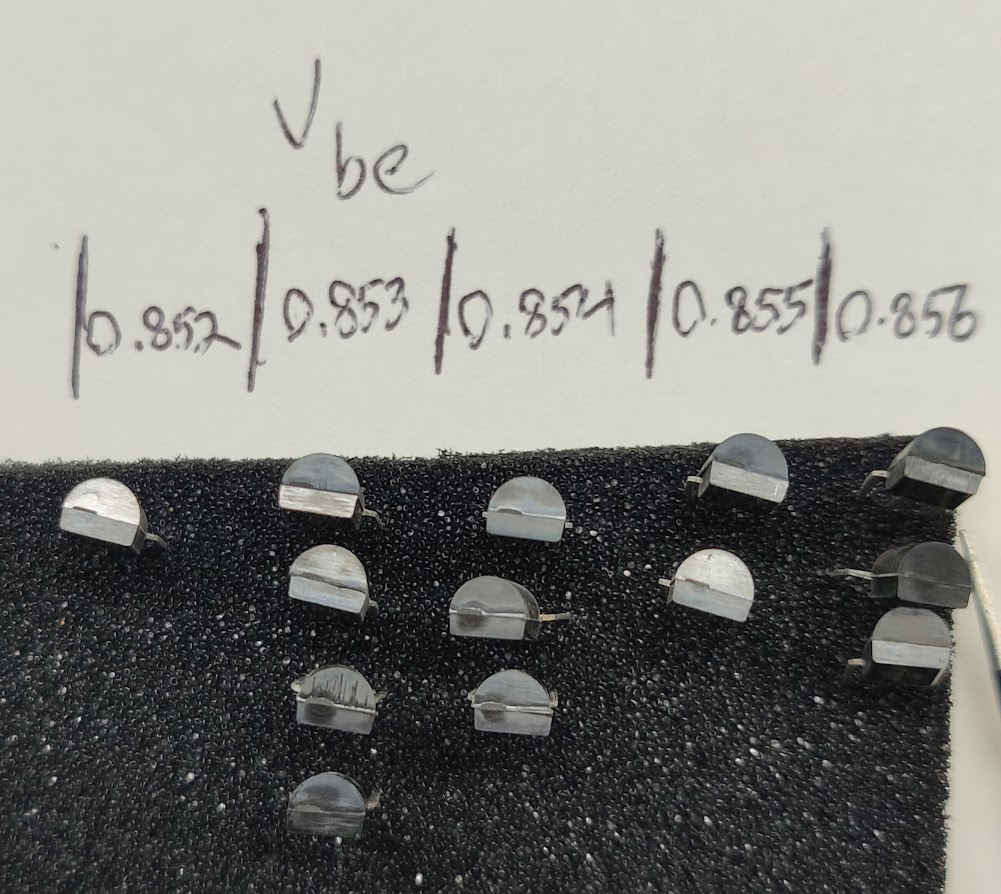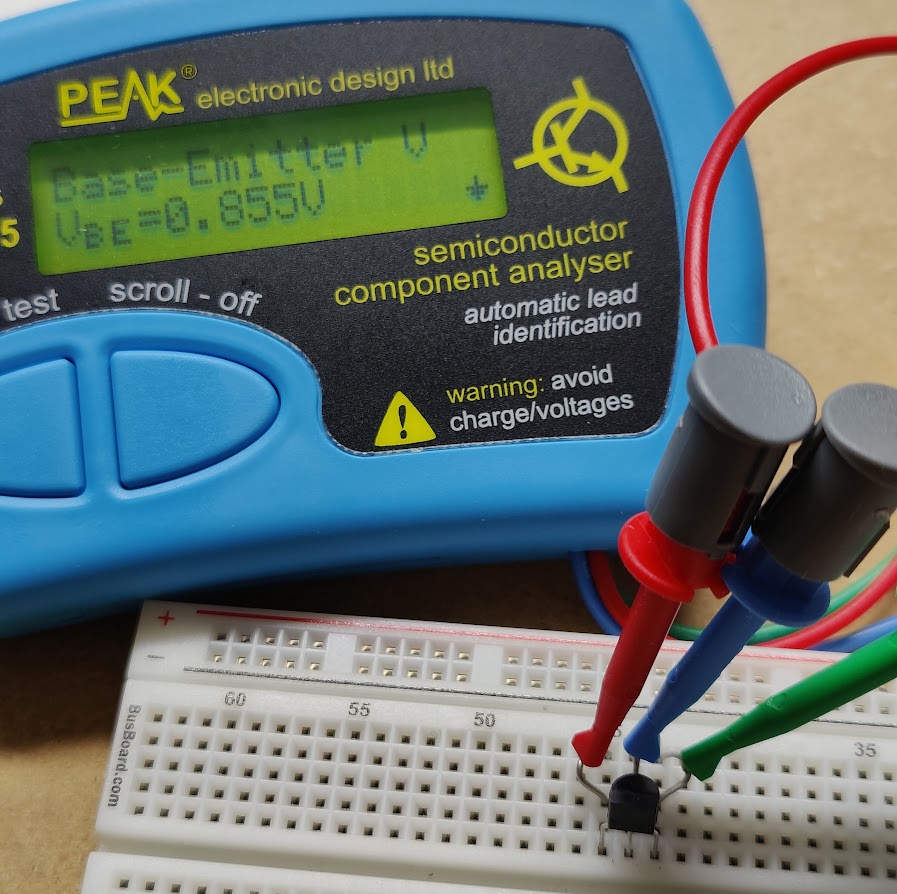
As you may know, the main focus of my electronics hobby is mostly surrounding audio processing with music application. My ultimate goal is a fully realized modular synthesis system, and boy, do the plans in my head get grand when it comes to that. I need to start small, though. The first module I'd like to make is a Voltage-Controlled Oscillator (VCO for short). After some searching, I've decided to go with Thomas Henry's "VCO-1" design. You can find it here. Now, there's one part of this VCO design that gets tricky, and that is the temperature sensitivity of the exponential conversion transistors. There's a full explanation of that temperature sensitivity on that Thomas Henry VCO-1 page. Long story short, two transistors in the circuit can cause the pitch of the oscillator to go very sharp or very flat depending on temperature changes if they're not both matched in performance and also thermally bound to each other. The resolution to this, aside from getting a harder and harder-to-get monolithic matched transistor pair chip, is to closely match the performance characteristics of the transistors. This has actually been extensively detailed by the Music From Outer Space (popularly known as MFOS) website here, but I'll be going with a much lazier approach of simply using a Peak Atlass DCA55 semiconductor component analyzer. I bought mine from Newark. Will it work? Not sure. The tolerance on this device is listed at ±2% ±4mV for the measurement we'll be looking at to match the transistors which is Vbe. This is actually a problem with this method considering we're looking for values withing 1-2mV of each other. If that worries you, I'd go with the MFOS method linked above. If you're like me, and you just want to ballpark it to maybe have a slightly flat/sharp VCO sometimes, read on!
I plan on using a breadboard to hold the transistor in place as I run the diagnostic test on it. Any breadboard will do; I personally am using a BusBoard.com BB830 for this project (I'm not sponsored, but if you reach out to me, I'd love to take any spares you have - your breadboards are fantastic.) I could just slap the transistor into the breadboard and attach the leads to the legs themselves, but those legs are pretty close together and hard to clip onto when they're in the breadboard. I will make wire loops to clip onto instead that I can bend about willy-nilly without worry of damaging anything and just toss them when I'm done.

Next, I plan on the actual categorization of the transistors. I thought on this briefly - from what I hear, most modern transistors are already pretty close in terms of Vbe if you get them from the same batch. I happened to order 250 of the 2N3906 transistors I'll be using in cut tape packaging which means all of them are from the same batch since they're all on the same tape. That's my line of thinking, anyway. I don't work at a transistor factory, I could be wholly wrong. Regardless, if they do end up being pretty similar, I shouldn't have too many heaps with differing Vbe, so I'll grab a piece of paper, toss some antistatic foam on it, and label each foam patch with the Vbe measurement.

I'm measuring these values to make them perform well in an environment with variable temperature. Ideally, the environment I measure them in would be stable in temperature, but the area my workshop in relies on an AC unit turning on and off to stay habitable, even at this time of year. These results may be even less reliable as the temp of the room swings several degrees while the AC kicks on and off. The MFOS site suggests a desk fan to circulate room air, but I don't think that would help in my current circumstance since the whole room is swinging in temperature. Perhaps I'll do multiple measurements of each transistor to ensure repeatability; we'll see.
Testing with this method is pretty dang quick. I made it through 13 transistors (all of the ones that I cut off the tape) in under 5 minutes, I'd say. Like I mentioned above, I think this convenience comes with a cost. I'm cutting a lot of corners to do this, so my results are likely sketchy. I noticed the Vbe of these transistors started off very consistant for the first 7 or 8 units, then the AC kicked on, and the Vbe values started going up. Whether this is coincidence or a result of the air getting cooler, I'm not sure. I might need to wait for the outdoor temp to stabilize so the room doesn't heat up so rapidly and test these all again to ensure accurate results. At least I remembered to use my tweezers rather than my fingers when handling!

Just to see if this is worth my time, I took the transistor with the lowest Vbe value in my measured units and threw it back in to test again. Its original Vbe was 0.852V, but it measured out at 0.855V the second time, a difference of 3mV. Again, this could be due to temp fluctuation of the room, but I think it's compounded by the resolution of the DCA55 device. In any case, 3mV variation is not confidence-inspiring when we're trying to get units within 1mV of each other.
Unfortunately, the conditions I'm testing in and the equipment I'm testing with aren't going to cut it when it comes to transistor matching. The DCA55 is a fine device for quick measurements, but it just doesn't have the tolerances I need for this. That being said, the oscillators I'm building likely will never interface with a keyboard, and the manner in which I plan on using them doesn't put heavy emphasis on the Volt/Octave standard. They may go sharp or flat as a performance goes on while the case temp changes with components heating up, but I need to determine how critical this is for my use cases. If I really need to, I can go through the process laid out on the MFOS site. I'll need to think on it after some more measurements in a more stable environment to see how wildly these Vbe values are swinging. If V/Oct and stable pitch is required, this method absolutely is not the route to go from these findings.